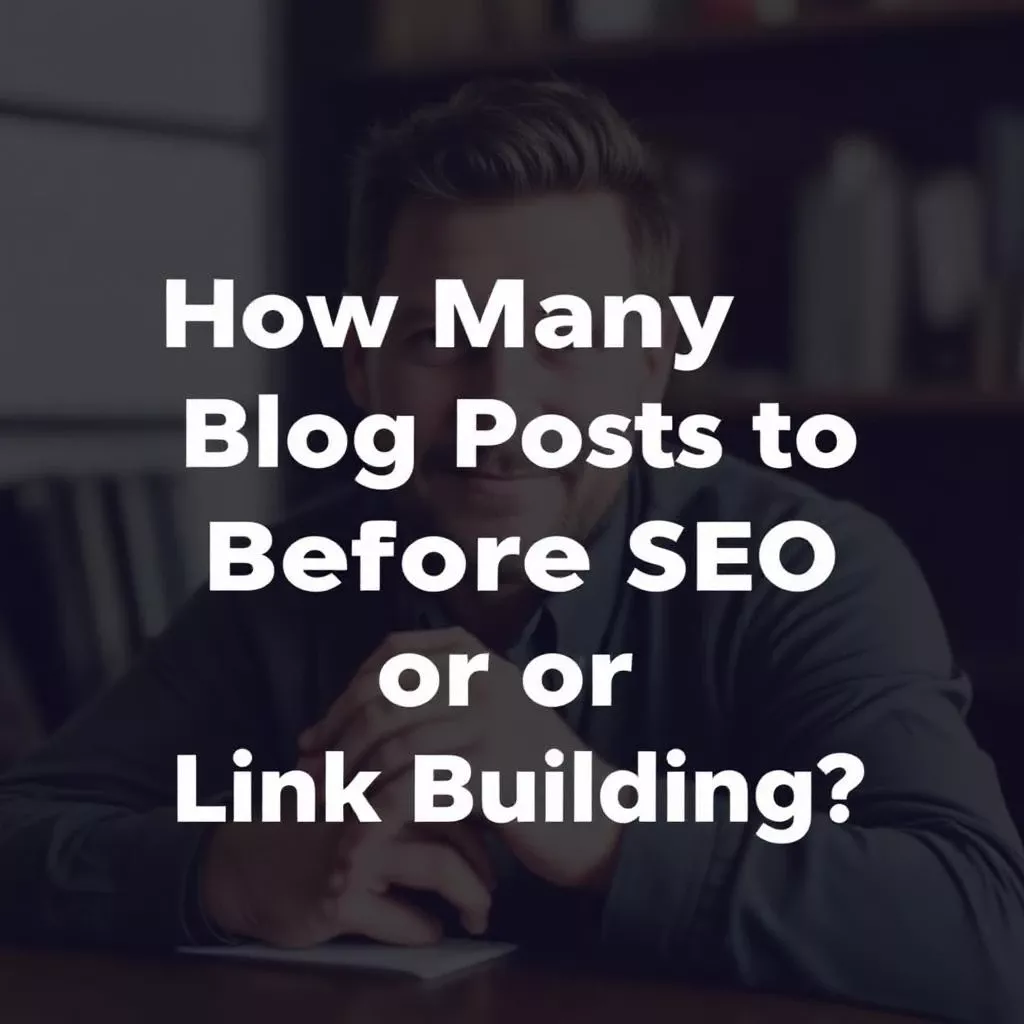How Many Blog Posts Should I Publish Before Starting SEO or Link Building?
Welcome to Temploop, your trusted source for blogging tips, SEO strategies, and content marketing insights. If you’re a new blogger, you’ve likely wrestled with this question: How many blog posts should I publish before I dive into SEO or start building links? It’s a pivotal decision. Focus too much on creating content without promotion, and your blog might languish in obscurity. Jump into SEO too soon, and you could waste effort on content that isn’t ready to compete.
This in-depth guide will walk you through everything you need to know to strike the right balance. We’ll explore why quality outweighs quantity, how your niche’s competitiveness shapes your approach, and when to transition from content creation to strategic promotion. Whether you’re blogging about tech, lifestyle, or a hyper-specific hobby, you’ll leave with a clear plan to grow your blog effectively.
👉Top 100 Google Searches April 2025: US, Global & Trending Keywords.
Why Quality Trumps Quantity Every Time
When figuring out how many blog posts to publish before starting SEO or link building, the first thing to understand is that quality is non-negotiable. A handful of exceptional posts will always outperform a flood of average ones.
The Case for Quality
Organic Link Magnetism: Stellar content naturally attracts backlinks and social shares—two pillars of SEO success. Think of a post so valuable that readers can’t help but share it. That’s the kind of content worth promoting.
Engaged Readers: High-quality posts keep visitors on your site longer, lowering bounce rates and boosting your search engine credibility. A well-crafted article can turn a casual reader into a loyal follower.
Authority Building: Consistently delivering insightful, well-researched content establishes your blog as a go-to resource. This credibility pays dividends when you start link building.
The Risks of Chasing Quantity
Authority Dilution: Publishing too many lackluster posts can weaken your blog’s overall reputation, making it harder to rank for competitive keywords.
Resource Burnout: Cranking out content without a plan drains your time, energy, and budget—leaving little for promotion.
Lost Potential: If your content isn’t compelling, your SEO efforts will struggle to gain traction. Search engines reward value, not volume.
Focus on crafting posts that solve problems, spark curiosity, or provide unique insights. When you do start SEO and link building, you’ll have a portfolio worth showcasing.
👉Top Plagiarism Checker Tools for 2025: Free & Paid Options Compared.
How Your Niche’s Competitiveness Shapes Your Strategy
There’s no universal number of blog posts that signals it’s time to start SEO or link building—it hinges on your niche. A crowded field demands a different approach than a wide-open one.
Navigating High-Competition Niches
Examples: Personal finance, fitness, software reviews, digital marketing.
What You Need: In these arenas, you’ll likely need 20+ top-tier posts to stand a chance against established players. These niches are packed with authority sites boasting hundreds of articles and robust backlink profiles.
Game Plan: Start with long-tail keywords (e.g., “best budgeting apps for freelancers”) to gain traction, then scale up to tougher terms (e.g., “budgeting tips”) as your content grows.
Thriving in Low-Competition Niches
Examples: Niche crafts, local history, emerging tech trends.
What You Need: With less competition, 5-10 stellar posts can position you as a leader. Fewer players mean faster wins.
Game Plan: Target broader keywords early (e.g., “handmade pottery techniques”) to capture traffic while building your foundation.
How to Evaluate Your Niche
Keyword Difficulty (KD): Tools like Ahrefs or Semrush can show you how hard it is to rank for your target terms. A KD above 50 signals a tough niche; below 30 suggests an easier entry.
Competitor Check: Study the top blogs in your space. Are they publishing daily with thousands of backlinks? Or do they have a leaner presence you can challenge?
Search Intent: Look at what ranks on Google. Are top results in-depth guides or quick listicles? Match your content to what’s winning.
Your niche’s landscape dictates how much content you need before SEO and link building become viable. Map it out, and you’ll know where to aim.
👉 Top Google Trends April 2025: Hottest Searches Unveiled
Building a Content Foundation That Stands Out
Before you dive into SEO or link building, you need a content foundation that showcases your blog’s value. This isn’t about hitting an arbitrary number—it’s about creating a body of work that sets you up for success.
Why a Foundation Matters
Proves Your Worth: A collection of strong posts signals to readers, search engines, and potential linkers that your blog is serious.
Boosts Site Structure: More content means more opportunities for internal linking, which helps search engines crawl your site and spreads authority across pages.
Widens Your Reach: Covering diverse topics increases your chances of ranking for multiple keywords and appealing to different audience segments.
How Much Content Is Enough?
General Blogs: Start with 10-15 high-quality posts. This gives you a solid base to promote while leaving room to refine your voice.
Competitive Niches: Aim for 20-30 posts to compete with heavy hitters. You’ll need the volume to establish a presence.
Niche Players: 5-10 posts can work if competition is light. Quality still rules, but you can scale up faster.
What Makes a Post “High-Quality”?
Depth: Cover topics thoroughly. A comprehensive guide beats a surface-level skim every time.
Engagement: Write to hook readers—use storytelling, data, or actionable tips to keep them invested.
Originality: Offer a fresh angle. If everyone’s writing “Top 10 Tips,” dig deeper with “10 Underrated Strategies.”
Your foundation isn’t just a launchpad—it’s your blog’s first impression. Make it count.
👉How to Write a Blog Post Fast in 2025: 7 Proven Strategies for Speed and Quality
SEO Basics You Should Start Implementing Now
SEO isn’t something to delay until you’ve hit a certain number of posts. Basic optimization should begin with your very first article. Here’s how to set yourself up for success from day one.
Must-Do On-Page SEO
Keyword Research:
Tools like Google Keyword Planner, Ubersuggest, or AnswerThePublic reveal what your audience is searching for.
Mix high-difficulty keywords (e.g., “SEO strategy for new blogs”) with long-tail gems (e.g., “how to optimize a blog post for beginners”).
Meta Magic:
Craft meta titles (50-60 characters) and descriptions (150-160 characters) that include your primary keyword and entice clicks.
Example: Title: “When to Start Link Building for Blogs” | Description: “Learn the perfect time to begin link building and boost your blog’s SEO.”
Headings That Help:
Use H1 for your main title, H2 for key sections, and H3 for subpoints. This structure aids readability and SEO.
Example: H2: “SEO Basics You Should Start Implementing Now” | H3: “Keyword Research.”
Internal Linking:
Connect posts with relevant anchor text (e.g., “blog content strategy”) to guide readers and search engines.
Start with your first post and link back as you publish more.
Image Smarts:
Compress images for faster load times (tools like TinyPNG work wonders).
Add keyword-rich alt text (e.g., “blogger optimizing SEO on laptop”).
Mobile Matters:
Test your site on mobile devices. Google’s mobile-first indexing means a clunky mobile experience tanks your rankings.
Why Start Early?
Compounding Gains: Optimized posts start ranking sooner, building momentum as you grow.
Habit Building: Integrating SEO from the start makes it second nature, not an afterthought.
Data Insights: Early traffic and keyword data guide your future content and promotion plans.
SEO isn’t a “later” task—it’s a “now” task that amplifies every post you publish.
👉How to Check Backlinks Fast: Track Your Website Links in Minutes
The Right Time to Kick Off Link Building
Link building supercharges your SEO, but timing is everything. Start too early, and you’re pitching a bare-bones site. Wait too long, and you miss growth opportunities. Here’s how to nail the timing.
When to Pull the Trigger
You’ve Got 5-10 Strong Posts:
A small but mighty content library gives you something worth linking to. Highlight your best work in outreach.
Example: Pitch a cornerstone post like “The Ultimate Guide to Blog Growth.”
Organic Traffic Is Trickling In:
If search or social channels are driving even modest traffic, your content’s resonating. Amplify it with links.
Content Creation Is Steady:
Publishing 1-2 posts weekly? You’ve got the bandwidth to add link building without dropping the ball.
You’ve Got a Plan:
Random outreach wastes time. Research targets, craft pitches, and prioritize tactics before you begin.
Beginner-Friendly Link-Building Ideas
Guest Posts: Write for reputable blogs in your niche, linking back to your best content.
Broken Link Outreach: Find dead links on relevant sites and suggest your post as a fix.
Resource Pages: Pitch your content to blogs with “helpful links” sections.
Collaborate: Team up with peers for content that earns links naturally (e.g., a joint study or roundup).
Pro Tips
Start Small: Aim for 1-2 quality links monthly rather than spamming outreach.
Track Efforts: Use a spreadsheet to log pitches, responses, and wins.
Prioritize Relevance: A link from a niche-aligned site beats a random high-authority one.
Link building works best when your blog has enough meat to impress. Build that foundation, then start connecting.
Using Metrics to Fine-Tune Your Approach
Gut feelings won’t cut it—data tells you when to shift from content creation to SEO and link building. Here’s what to track and how to act on it.
Metrics That Matter
Organic Traffic:
Source: Google Analytics.
Sign: Steady growth means your content’s gaining traction. Flatlines suggest it’s time to promote.
Engagement (Bounce Rate & Time on Page):
Source: Google Analytics.
Sign: Low bounce rates (<50%) and high time on page (>2 minutes) show readers love your stuff. Poor stats? Refine your content first.
Social Shares:
Source: BuzzSumo or manual checks.
Sign: Shares signal shareability—perfect for link-building pitches.
Backlinks:
Source: Ahrefs, Moz, or Google Search Console.
Sign: Natural links mean you’re on the right track. None? Time to build manually.
Keyword Rankings:
Source: Google Search Console or rank trackers.
Sign: Ranking for long-tail terms? Target bigger keywords next.
When to Pivot
Stagnant Traffic: After 10+ posts with no organic growth, focus on SEO and links.
Low Engagement: If readers bounce fast, improve quality before promoting.
Early Wins: Ranking for niche terms signals readiness for broader SEO efforts.
Tools to Use
Google Analytics: Free traffic and engagement insights.
Search Console: Keyword and performance data.
Ahrefs/Semrush: Backlinks and competitor analysis (paid but worth it).
Data keeps you honest. Use it to time your next move.
Real-World Examples of Blogs That Got It Right
Let’s see these principles in action with two blogs that mastered the content-to-SEO transition.
Backlinko: Quality Over Volume
Niche: SEO (ultra-competitive).
Approach: Launched with ~10 in-depth posts, then poured energy into link building via outreach and skyscraper content.
Outcome: Ranks for terms like “SEO techniques” with a lean site, thanks to quality and strategic promotion.
Minimalist Baker: Steady Foundation
Niche: Plant-based recipes (moderate competition).
Approach: Built 20+ detailed recipe posts with strong internal linking, then optimized for long-tail keywords like “vegan chocolate cake.”
Outcome: Grew organic traffic steadily, leveraging a solid base to expand into books and collabs.
Lessons Learned
Quality First: Both prioritized value over volume.
Timing Matters: They built enough content to prove their worth before pushing SEO hard.
Niche Fit: Backlinko went lean and aggressive; Minimalist Baker scaled broader but slower.
Your blog can follow suit—adapt their tactics to your niche.
Practical Steps to Launch Your Blog’s Growth
Ready to put this into action? Here’s your step-by-step playbook:
Audit Existing Content:
Review current posts. Update weak ones or merge them into stronger pieces.
Set a Content Target:
Aim for 10-15 high-quality posts as your baseline. Adjust based on niche.
Bake in SEO Early:
Optimize every post with keywords, meta tags, and internal links from the start.
Plan Your Link Building:
List 5-10 outreach targets (e.g., guest post sites) and draft personalized pitches.
Track Your Progress:
Set up Google Analytics and Search Console. Check monthly for trends.
Keep the Momentum:
Publish consistently (e.g., weekly) while starting small with link building.
Build Buzz:
Share posts on social media and encourage reader interaction to boost signals.
These steps bridge content creation to promotion, setting your blog up to thrive.
Wrapping It Up: Your Path to Blogging Success
There’s no magic number of blog posts that unlocks SEO or link building—it’s about readiness. For most, 10-15 high-quality posts form a foundation worth promoting, though your niche might demand more or less. The key? Prioritize quality, weave in SEO from the start, and begin link building when your content proves its value.
At Temploop, we’re here to help you grow. Focus on delivering value, monitor your metrics, and scale your efforts strategically. Soon, you’ll see your blog climb the ranks, attract links, and build the audience it deserves.
Sources:










